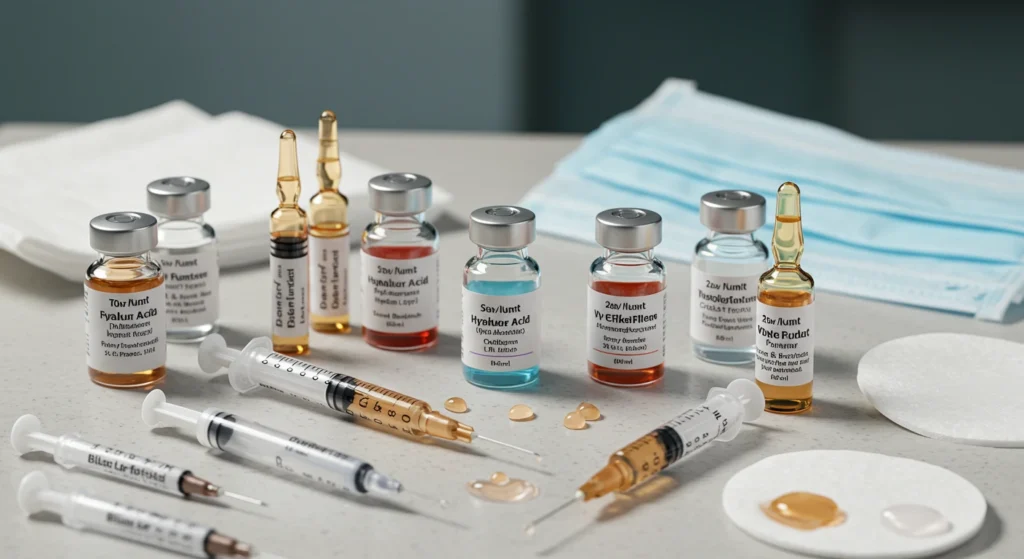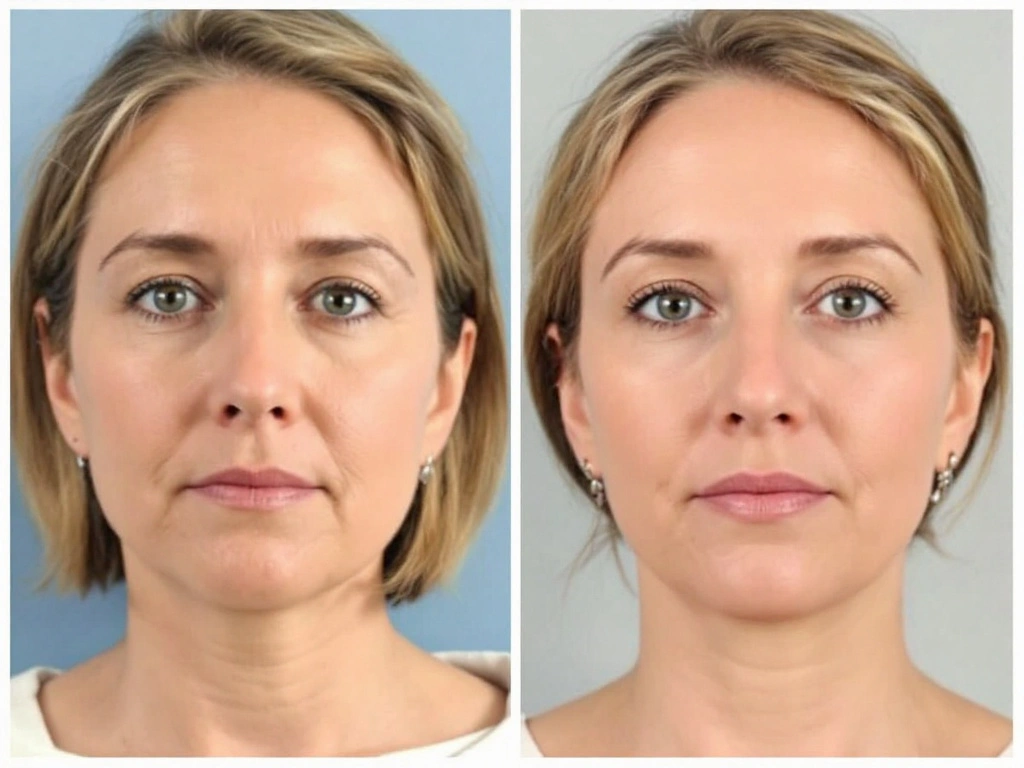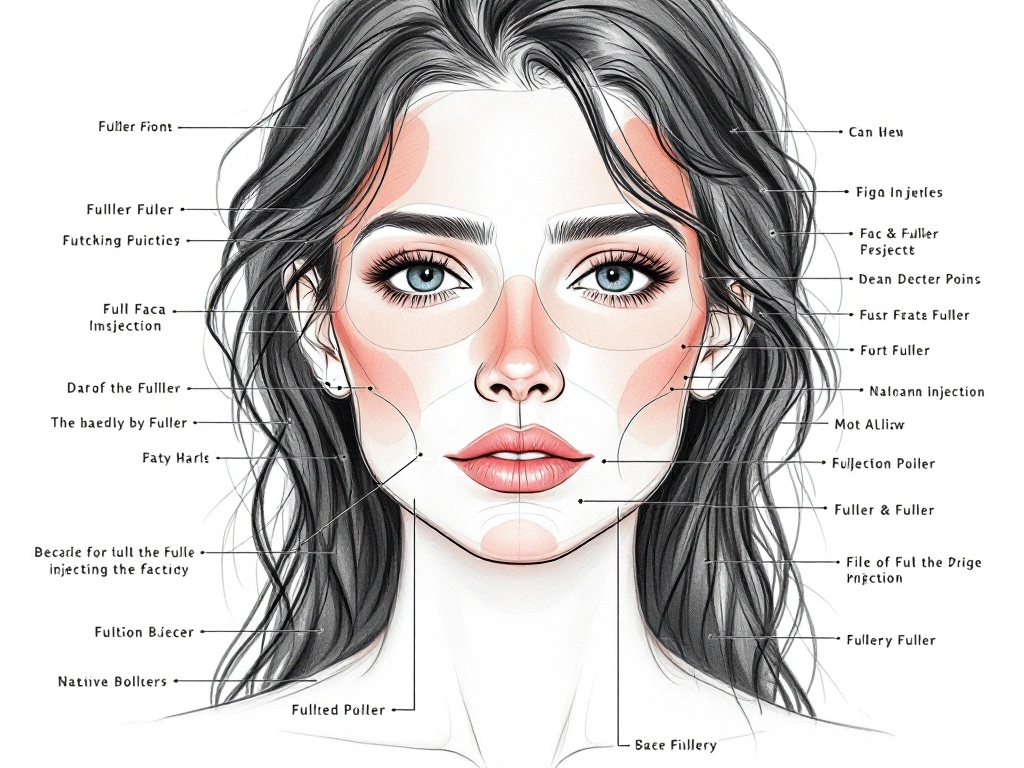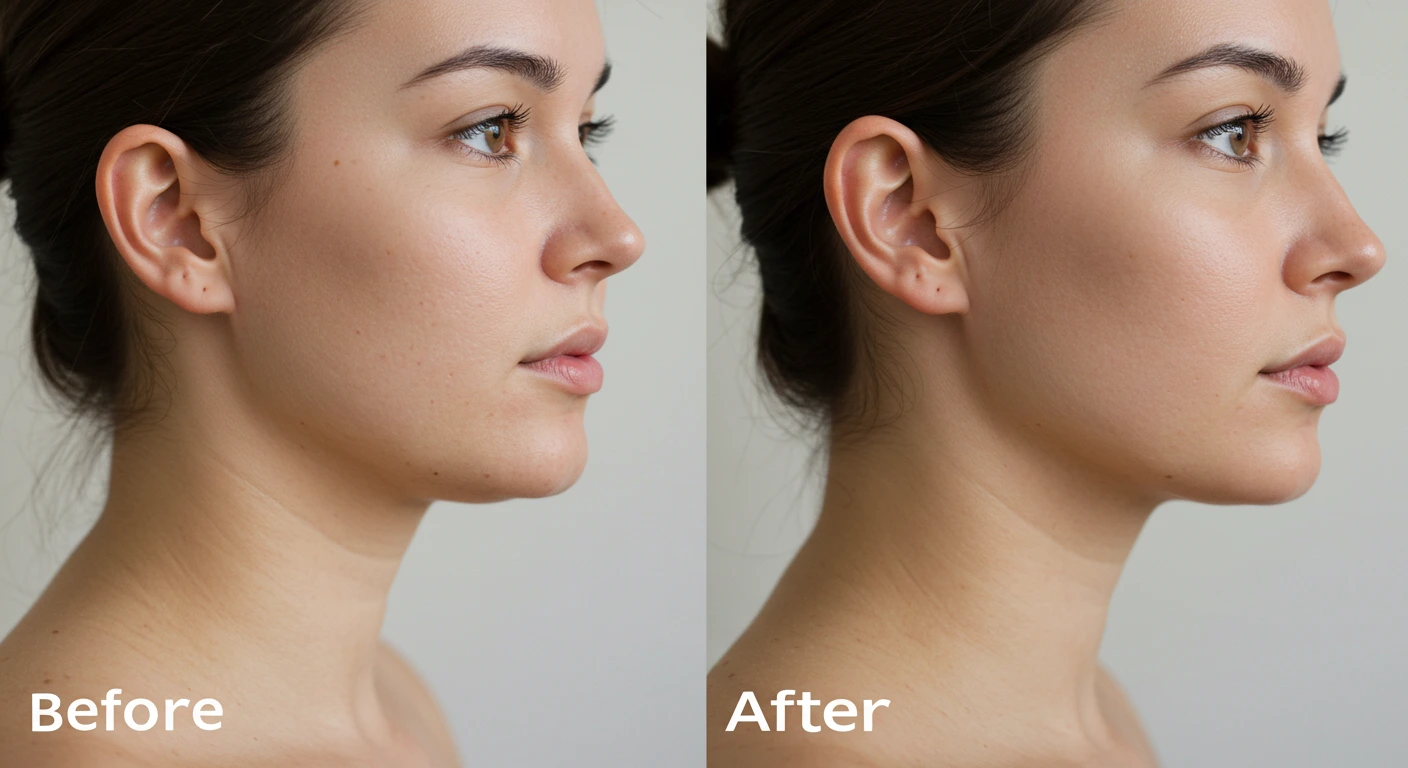Table of Contents
Introduction
Jawline fillers have become a game-changer for anyone looking to enhance their facial features and achieve a more sculpted, defined appearance without the need for invasive surgery. This non-surgical treatment has gained immense popularity among men and women alike, offering a customizable solution to improve facial contours, restore lost volume, and even combat the signs of aging. Whether your goal is to achieve a sharper jawline, balance facial asymmetry, or simply enhance your natural beauty, jawline fillers provide an effective and safe way to transform your profile.
In this guide, we’ll explore everything you need to know about jawline fillers—from their impressive benefits to the procedure itself, associated costs, and how long you can expect the results to last. With advancements in dermal filler technology, treatments like jawline fillers are now more accessible and tailored to individual preferences, making it easier than ever to achieve your desired look. Whether you’re curious about the process, wondering if it’s right for you, or ready to take the next step toward a more defined jawline, this comprehensive guide will help you make an informed decision and embrace the confidence that comes with a perfectly contoured jawline.
What Are Jawline Fillers?
Jawline fillers are advanced injectable treatments specifically designed to enhance the volume, shape, and definition of the jawline. These fillers have become increasingly popular as a non-surgical solution for improving facial contours, creating symmetry, and achieving a more sculpted and youthful appearance. By adding targeted volume to the jaw area, they help define and enhance the natural structure of the face, making them an excellent option for those looking to refine their features without surgery.
The most commonly used jawline fillers are made from hyaluronic acid (HA), a naturally occurring substance in the body that plays a crucial role in maintaining skin hydration and elasticity. HA-based fillers are particularly popular due to their ability to deliver subtle, natural-looking results. However, other options such as calcium hydroxylapatite (CaHA) and poly-L-lactic acid (PLLA) are also widely used. These fillers cater to various needs, allowing for a tailored approach depending on the individual’s goals and facial structure.
Types of Jawline Fillers and Their Benefits

Hyaluronic acid (HA) fillers are ideal for those seeking natural enhancements as they not only add volume but also hydrate the skin, leaving it plump and youthful. These fillers are reversible, making them a great choice for individuals new to cosmetic treatments. For those desiring a firmer and more structured result, calcium hydroxylapatite (CaHA) fillers are an excellent option. They provide long-lasting results and are especially effective for those who want a stronger and more defined jawline.
Poly-L-lactic acid (PLLA) fillers work differently by stimulating collagen production in the treated area. This allows for gradual, natural improvements over time and delivers results that can last for up to two years. Each type of filler comes with its own set of advantages, and a qualified specialist can help determine the best option based on your facial anatomy, goals, and preferences.
Whether addressing weak jawlines, restoring age-related volume loss, or achieving a sleek, contoured look, jawline fillers offer a versatile, non-invasive solution with minimal downtime and maximum customization.
Benefits of Jawline Fillers
Jawline fillers offer numerous benefits, making them a popular choice for those looking to enhance their appearance:
- Non-Surgical Solution: Unlike surgical procedures, jawline fillers require no incisions, minimal downtime, and can be performed in a quick office visit.
- Immediate Results: Patients often see immediate improvement in their jawline definition following the treatment.
- Customizable Outcomes: The amount and placement of fillers can be adjusted to meet individual aesthetic goals.
- Reversibility: Most jawline fillers are made of hyaluronic acid, which can be dissolved with an enzyme called hyaluronidase if needed.
- Minimal Side Effects: Common side effects are usually mild and temporary, such as swelling, bruising, and redness at the injection site.
Jawline Filler Before and After
Before-and-after photos can provide a visual representation of the transformative power of jawline fillers. Here are a few examples:

Patient Testimonial 1:
“I was hesitant at first, but the results were amazing. My jawline looks more defined, and I feel more confident.” — Sarah M. Source: RealSelf
Patient Testimonial 2:
“The procedure was quick and painless. I love how natural it looks!” — John D. Source: WebMD
Jawline Filler Cost
The cost of jawline fillers can vary depending on several factors, including the type of filler used, the amount required, and the location of the clinic. On average, patients can expect to pay between $600 and $1,200 per syringe. For a complete jawline enhancement, multiple syringes may be necessary, bringing the total cost to around $1,800 to $3,600.
Factors Affecting Cost:
- Type of Filler: Different types of fillers have varying prices. Hyaluronic acid fillers are generally less expensive than synthetic fillers.
- Amount Needed: The length and contour of your jawline will determine how much filler is required.
- Provider Experience: Highly experienced and renowned providers may charge more for their expertise.
- Geographic Location: Costs can differ significantly based on the region and city where the procedure is performed.
Jawline Filler Cost
| Factor | Details |
|---|---|
| Average Cost Per Syringe | $600 to $1,200 |
| Total Cost for Complete Enhancement | $1,800 to $3,600 (multiple syringes may be needed) |
| Type of Filler | – Hyaluronic Acid (HA): Generally less expensive |
| – Synthetic Fillers: More expensive | |
| Amount Needed | Depends on the length and contour of your jawline |
| Provider Experience | Higher experience may lead to higher costs |
| Geographic Location | Costs can vary significantly based on the region and city |
How Long Does Jawline Filler Last?
The longevity of jawline fillers depends on various factors, including the type of filler used and individual metabolism. On average, hyaluronic acid fillers last between 9 to 18 months. Some factors that can influence the duration include:
- Filler Type: Synthetic fillers like Radiesse can last longer, up to two years.
- Injection Technique: Proper placement and technique can maximize the effectiveness and longevity of the filler.
- Lifestyle Factors: Smoking, sun exposure, and physical activity can affect how quickly the filler breaks down.
Preparing for Jawline Filler Treatment

To ensure the best possible outcome, it’s important to prepare properly for your jawline filler treatment. Here are some tips:
- Consultation: Schedule a consultation with a board-certified dermatologist or plastic surgeon to discuss your goals and expectations.
- Medical History: Provide a detailed medical history, including any medications or supplements you are taking.
- Avoid Blood Thinners: Stop taking blood thinners, aspirin, and anti-inflammatory medications at least one week before the procedure to reduce the risk of bruising.
- Hydration: Stay hydrated to help the skin better absorb the filler.
The Procedure
The jawline filler procedure is relatively simple and can be completed in about 30 minutes. Here’s what you can expect:
- Numbing Cream: A topical numbing cream may be applied to the treatment area to minimize discomfort.
- Injection: The filler is injected into strategic points along the jawline using a fine needle or cannula.
- Massaging: The provider may gently massage the treated area to ensure the filler is evenly distributed.
- Post-Treatment Care: Follow your provider’s instructions for post-treatment care, which may include avoiding strenuous activity and applying cold compresses to reduce swelling.
Potential Risks and Side Effects of Jawline Fillers
While jawline fillers are considered a safe and effective cosmetic treatment, it’s essential to be aware of potential risks and side effects. Understanding these possibilities can help you prepare for the procedure and ensure proper care afterward for the best results. Below are the most common risks and side effects associated with jawline fillers:
- Swelling and Bruising: Mild swelling and bruising around the injection site are normal side effects. These typically resolve within a few days and can be minimized by avoiding blood-thinning medications or supplements before the procedure.
- Asymmetry: In some cases, uneven distribution of the filler may lead to asymmetry in the jawline. However, this can usually be corrected during a follow-up appointment with your practitioner.
- Allergic Reactions: Although rare, allergic reactions to the filler material may occur. Symptoms can include redness, itching, or swelling. Always inform your provider about any allergies or sensitivities you may have before the treatment.
- Infection: While uncommon, there is a small risk of infection at the injection site. Ensuring that the procedure is performed in a sterile environment by a qualified professional and following aftercare instructions can significantly reduce this risk.
To minimize these risks, always consult with an experienced and certified practitioner. Proper preparation, skilled application, and diligent aftercare play crucial roles in reducing side effects and achieving safe, satisfying results.
Maintaining Your Results
How to Maintain Jawline Filler Results for Long-Lasting Beauty
Achieving a beautifully sculpted jawline with fillers is just the first step—maintaining those results requires a combination of proper care, healthy habits, and regular follow-ups. While jawline fillers provide a long-lasting solution to enhance facial contours, the results are not permanent. To ensure you get the most out of your treatment, follow these tips to keep your jawline looking defined and youthful for as long as possible:
- Regular Touch-Ups: Jawline fillers typically last anywhere from 9 to 18 months, depending on the type of filler and your body’s natural metabolism. Scheduling regular maintenance sessions with your practitioner is essential to sustain the desired definition and prevent fading over time. By addressing minor volume loss early, touch-ups can extend the lifespan of your results and ensure a consistent, natural look.
- Follow a Healthy Lifestyle: Your overall lifestyle has a direct impact on the longevity of your filler results. Eating a balanced diet rich in skin-friendly nutrients like collagen-boosting proteins, antioxidants, and omega-3 fatty acids helps maintain healthy, firm skin. Staying well-hydrated also supports skin elasticity and reduces the appearance of fine lines. Avoiding habits such as smoking is particularly important, as smoking accelerates skin aging and may cause fillers to break down faster.
- Protect Your Skin from the Sun: Sun exposure not only damages your skin but also speeds up the breakdown of fillers. UV rays can weaken the treated area, leading to a shorter lifespan for your jawline fillers. Make sunscreen a non-negotiable part of your daily routine, using a broad-spectrum SPF 30 or higher. Pair sunscreen with protective measures like wearing wide-brimmed hats and sunglasses to shield your skin further from harmful rays.
- Maintain a Consistent Skincare Routine: A well-rounded skincare regimen can significantly enhance the effects of your fillers. Incorporate products with hyaluronic acid to maintain hydration and boost the plumping effects of the fillers. Additionally, using retinoids, peptides, and vitamin C can improve collagen production and support the overall health of your skin, prolonging the results of your treatment.
- Avoid Extreme Facial Movements or Trauma: For the first few weeks after getting jawline fillers, avoid activities that may put excessive pressure on your jaw area, such as resting your face on your hands or wearing overly tight helmets or face gear. Excessive movement or trauma to the treated area can disrupt the fillers and impact the final results.
- Stay Active but Avoid Over-Exercising: While regular exercise is essential for overall health, extreme physical activity that increases your metabolic rate significantly might cause fillers to dissolve faster. Maintain a balanced exercise routine that includes moderate activities like yoga, walking, or light strength training to support your results without compromising the longevity of the treatment.
- Get Enough Sleep: Quality sleep is a key factor in maintaining youthful, glowing skin. Poor sleep can lead to increased stress hormones, which may negatively impact your skin’s health and the longevity of your fillers. Aim for at least 7-8 hours of restful sleep each night and try to sleep on your back to avoid putting pressure on your jawline.
- Consult Your Practitioner for Advice: Your practitioner knows your facial anatomy and treatment plan best. Schedule periodic check-ins to assess your filler results and discuss any changes or additional treatments you may need to maintain the best outcome. They can recommend complementary treatments, such as Botox or skin-tightening therapies, to further enhance and prolong the effects of your jawline fillers.
By combining these strategies with proper aftercare immediately following your procedure, you can maximize the longevity of your jawline filler results and enjoy a beautifully defined and youthful appearance. With the right approach, your fillers can remain a natural-looking enhancement that boosts your confidence and complements your features for months to come.
Choosing the Right Provider
Choosing the right provider is crucial for achieving the best results. Look for a board-certified dermatologist or plastic surgeon with extensive experience in administering jawline fillers. Here are some questions to ask during your consultation:
- Qualifications: What are your qualifications and certifications?
- Experience: How many jawline filler procedures have you performed?
- Techniques: What techniques do you use to ensure the best results?
- Reviews: Can you provide patient reviews or testimonials?
Frequently Asked Questions (FAQ)
Q: Is the procedure painful?
A: Most patients report minimal discomfort, thanks to the use of a topical numbing cream. The procedure is generally well-tolerated. Source: Mayo Clinic
Q: How long does the procedure take?
A: The entire process typically takes about 30 minutes, including the application of the numbing cream. Source: American Society of Plastic Surgeons
Q: When will I see results?
A: You should see immediate results, with full effects becoming apparent within a few days as the swelling subsides. Source: Healthline
Q: Are there any restrictions after the treatment?
A: It’s advisable to avoid strenuous activity and direct sunlight for a day or two. Follow your provider’s post-treatment care instructions closely. Source: Verywell Health
Q: Can jawline fillers be combined with other treatments?
A: Yes, jawline fillers can be combined with other cosmetic treatments, such as Botox or skincare procedures, to achieve a more comprehensive rejuvenation. Source: Allure
Conclusion
Jawline fillers provide a non-invasive and highly effective solution for enhancing your facial profile and achieving a more sculpted, well-defined jawline. This treatment is ideal for those seeking a subtle yet noticeable improvement without the need for surgery. With proper preparation, skilled application by an experienced professional, and dedicated aftercare, jawline fillers can deliver stunning, natural-looking, and long-lasting results. Whether you want to improve facial symmetry, add definition, or restore lost volume, jawline fillers offer a customizable approach to meet your aesthetic goals. To ensure the best outcome, it’s essential to consult with a qualified specialist who can guide you through the process, answer your questions, and create a treatment plan tailored to your unique needs.
Key Takeaways
- Jawline fillers are injectable treatments that add volume and definition to the jaw area.
- Benefits include non-surgical solutions, immediate results, customizable outcomes, reversibility, and minimal side effects.
- Cost ranges from $600 to $1,200 per syringe, with total costs depending on various factors.
- Longevity varies, with hyaluronic acid fillers lasting 9-18 months.
- Preparation involves a consultation, providing medical history, and avoiding certain medications.
- Procedure is quick and straightforward, with minimal discomfort.
- Risks include swelling, bruising, and rare complications.
- Maintenance requires regular touch-ups and a healthy lifestyle.
- Choosing the right provider is crucial for the best results.

